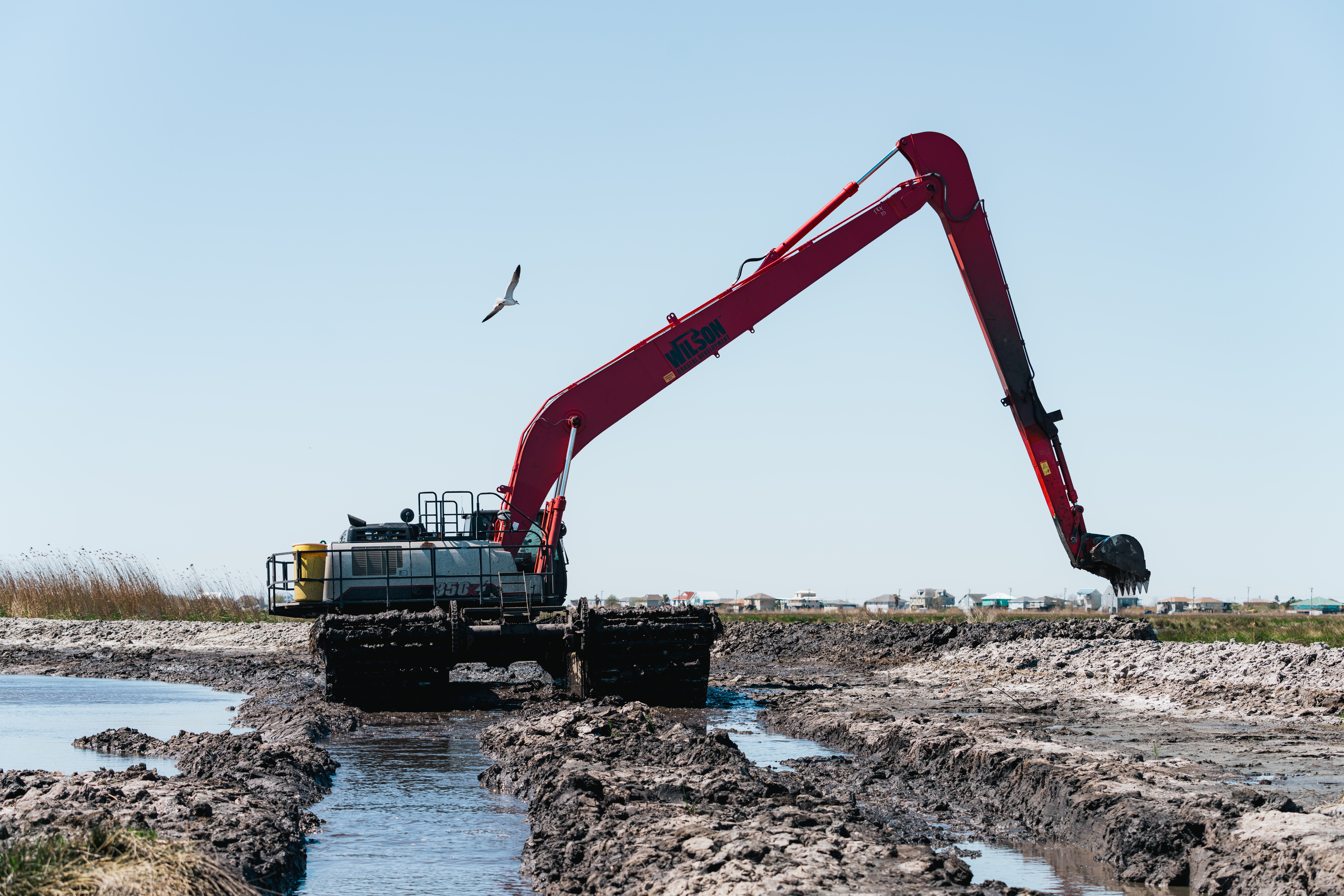Managing land and water simultaneously requires specialised tools, and few innovations have proven more effective than amphibious machines. Across coastlines, wetlands, and marshes, erosion threatens infrastructure, ecosystems, and communities. To combat these challenges, contractors and environmental agencies are increasingly turning to purpose-built erosion control equipment designed to operate in areas where conventional machinery cannot.
From coastal restoration projects that preserve shorelines to marsh restoration efforts that protect wildlife habitats, amphibious equipment provides solutions tailored to some of the most complex environmental problems. These machines are not simply construction tools; they are essential assets for long-term land and water management.
For a closer look at the range of equipment available, Wilco provides detailed specifications and models of amphibious equipment designed to handle erosion and restoration tasks.
Understanding the Erosion Challenge
Erosion is a natural process, but human activity, severe weather, and rising sea levels have accelerated its impact. The loss of shoreline and wetland areas is more than a matter of geography—it affects ecosystems, industries, and local communities.
Key consequences of unchecked erosion include:
- Damage to infrastructure such as levees, pipelines, and roads.
- Habitat loss for birds, fish, and wetland species.
- Increased vulnerability to flooding and storm surge.
- Declines in water quality due to sediment disruption.
Conventional land-based equipment struggles in these environments, where soft soils and waterlogged conditions make access nearly impossible. This is where amphibious technology changes the approach.
The Role of Amphibious Machines in Erosion Control
Amphibious machines are specifically designed to operate in wetlands, marshes, and shallow waters. Their pontoons, tracks, and hydraulic systems enable them to float, navigate soft ground, and perform heavy-duty work in areas inaccessible to traditional machinery.
Benefits of amphibious erosion control equipment:
- Accessibility – Reach remote wetlands, coastal zones, and estuaries.
- Efficiency – Perform dredging, excavation, or vegetation removal in unstable conditions.
- Versatility – Handle multiple attachments for restoration and construction tasks.
- Minimal Impact – Reduce disturbance to sensitive ecosystems compared to heavier land equipment.
These features make them indispensable for projects focused on shoreline protection, sediment management, and wetland preservation.
If you would like to discuss equipment specifications directly, Wilco’s team is available by phone at 504-341-3409 to provide detailed support for project requirements.
Coastal Restoration with Amphibious Equipment
Coastlines are among the most vulnerable areas to erosion, where waves, tides, and storms constantly reshape the land. Coastal restoration projects aim to stabilise these zones through dredging, sediment relocation, and the building of protective barriers.
Amphibious machines are uniquely suited for these tasks because they:
- Place sediment accurately to rebuild dunes and beaches.
- Support planting of vegetation that anchors soil.
- Operate in tidal areas without being restricted by water depth.
These capabilities not only protect infrastructure and property but also preserve ecosystems that provide natural storm barriers.
Marsh Restoration and Environmental Benefits
Wetlands and marshes serve as critical buffers between land and water. They absorb floodwaters, filter pollutants, and support biodiversity. However, erosion and human development have caused significant losses in marshland areas worldwide.
Amphibious machines support marsh restoration efforts by:
- Removing invasive plants that disrupt native ecosystems.
- Rebuilding natural waterways through dredging.
- Transporting and distributing soil to restore degraded areas.
- Assisting in replanting efforts to stabilise marsh vegetation.
By facilitating these tasks, amphibious equipment directly contributes to long-term ecological stability and resilience against climate change.
For organisations seeking tailored consultation on restoration equipment, Wilco’s experts are available at bwilson@wilcomarshbuggies.com.
How Erosion Control Equipment is Engineered
The effectiveness of amphibious machinery lies in its design. Every component is engineered to manage the demands of operating in waterlogged environments.
Key design elements include:
- Pontoons: Provide buoyancy, allowing the machine to float and operate in shallow waters.
- Tracks: Wide, heavy-duty tracks distribute weight to prevent sinking in soft soils.
- Hydraulics: Custom systems deliver power for dredging, excavation, or lifting.
- Durability: Corrosion-resistant materials withstand constant exposure to water.
These features ensure the machines are capable of working in conditions where other equipment would quickly fail.
Applications Across Industries
While environmental agencies use amphibious equipment for ecological projects, contractors also rely on these machines for industrial applications.
Common uses include:
- Pipeline and Energy Support – Creating access in wetlands for construction and inspection.
- Flood Management – Clearing drainage canals and reinforcing levees.
- Navigation Improvement – Dredging shallow waterways for boat and barge access.
This wide range of applications demonstrates the flexibility of amphibious erosion control equipment.
Durability and Maintenance in Harsh Environments
Operating in wetlands exposes equipment to constant challenges, from corrosive water to shifting soils. Durability is achieved through:
- Reinforced pontoons with protective coatings.
- Heavy-duty track systems built for long service life.
- Hydraulic systems engineered for continuous operation.
- Accessible components for easier maintenance.
Routine servicing and proper care ensure equipment remains effective for years, protecting investments while supporting environmental outcomes.
Why Amphibious Machines Are Essential for the Future
As climate change accelerates sea level rise and increases storm frequency, the demand for effective erosion control will only grow. Amphibious machines are not a luxury but a necessity in preparing for these challenges.
They provide the ability to protect communities, preserve ecosystems, and sustain infrastructure in areas where other solutions fail. Their versatility ensures they will remain vital tools for environmental management for decades to come.
For those considering a custom solution or needing more detailed project support, Wilco provides consultation through their contact page.
Conclusion
Erosion presents a growing challenge to coastlines, marshes, and communities worldwide. Addressing it requires tools capable of performing in environments where water and land meet. Amphibious machines fill this role as indispensable erosion control equipment, offering both accessibility and versatility.
From coastal restoration to marsh restoration, their contributions extend beyond construction—they safeguard ecosystems, infrastructure, and future resilience. With engineered durability and proven adaptability, amphibious equipment is redefining how erosion control projects are approached.
As environmental challenges grow, these machines will continue to serve as game-changing solutions for agencies and contractors committed to preserving the land and water balance.
Frequently Asked Questions (FAQ)
1. What is the main advantage of using amphibious machines for erosion control?
Their ability to operate in waterlogged and unstable ground conditions makes them more effective than conventional land-based equipment.
2. How do amphibious machines support coastal restoration?
They rebuild beaches, stabilise shorelines, and help plant vegetation that prevents soil loss.
3. Can these machines be used for marsh restoration projects?
Yes, they can remove invasive species, dredge waterways, and transport soil for habitat restoration.
4. What industries commonly use erosion control equipment?
Environmental agencies, construction contractors, oil and gas operators, response teams.
5. How can I request a consultation or custom equipment solution?
You can reach out directly to Wilco’s team via email, phone, or the online contact page.


